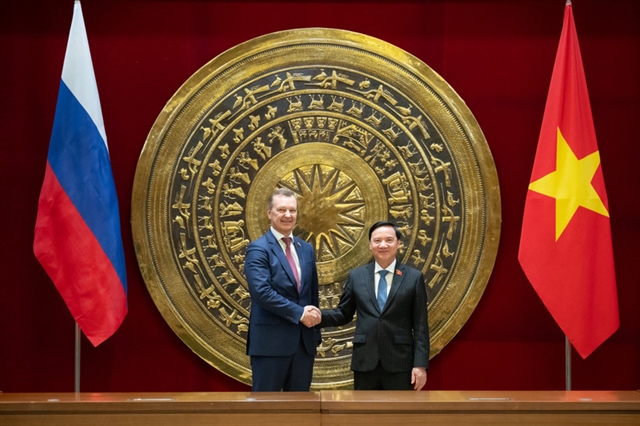 Politics & Law
Politics & Law

 |
| Việt Nam ranks 12th among 27 countries measured in the 2024 Asia Power Index. — Photo courtesy of Lowy Institute |
HÀ NỘI — Việt Nam has retained its position in a ranking system of the most powerful countries in the Asia region.
It registered a 1.2 point gain, or a seven percentage points change, to score 18.7 out of 100, in the latest Australia-based Lowy Institute's 2024 Asia Power Index.
Việt Nam's position remains unchanged at number 12 throughout 2020-24 out of the 27 countries measured in the index.
The index measures eight spheres: diplomatic influence, cultural influence, future resources, economic relationships, military capability, economic capability, resilience and defence networks.
The index assesses both resources and influence to rank the relative power of states in Asia. It provides a detailed view of the current power dynamics and monitors changes in the regional balance over time.
Việt Nam, which belonged to the 'middle power' category per the index, gained points in the first six spheres, while its score for resilience remains unchanged. The country lost points in defence networks, mostly in the diversity and depth of regional defence diplomacy and arms trade patterns and collaborations across various defence industries.
Việt Nam does best in the diplomatic influence measure, placing 8th, thanks to its "proactive diplomatic outreach with a diverse set of partners." The ranking for this measure improved by one place in 2024.
In terms of diplomatic influence in Asia, China, Japan, and the United States occupied the top three spots. Among ASEAN countries, only Indonesia (6th place), Việt Nam (8th), and Singapore (9th) made it to the top 10.
The index noted that in 2023, Việt Nam held the second-most number of meetings with 89 engagements (bilateral diplomacy between leaders or foreign ministers), only behind Japan with 96.
Other than diplomatic influence, Việt Nam also made it into the top 10 countries regarding future resources ranking.
The power gap is a secondary analysis to the index, based on the interplay between resources and influence. In this aspect, the index remarked that: "Việt Nam exerts more influence in the region than expected given its available resources, as indicated by the country’s positive power gap score, which remained steady in 2024."
Among ASEAN member states, Singapore is the biggest overachiever, followed by Thailand, Malaysia, Indonesia, the Philippines, Việt Nam and Cambodia.
China remains the biggest trade partner of Việt Nam, followed by the United States, South Korea, the European Union and Japan. Meanwhile, in the region, Cambodia and Laos rely the most on trade with Việt Nam, followed by South Korea, China and Thailand.
Ninth-ranked Indonesia — the largest country of Southeast Asia, with a population of 280 million — gained 2.9 points, more than any other Asia Power Index country. Indonesia also boasts highest growth in comprehensive power since 2018, according to the report.
The United States and China share the two top positions, unchanged since it was first introduced by the Lowy Institute in 2018.
The Index evaluates 27 countries and territories based on their ability to shape their external environment, extending its analysis from Pakistan in the west to Russia in the north and across the Pacific to include Australia, New Zealand and the United States.
The 2024 edition marks the debut of Timor-Leste, reflecting its growing significance as it is expected to join the Association of Southeast Asian Nations (ASEAN).
The project evaluates international power in Asia through 131 indicators across eight thematic measures: military capability and defence networks, economic capability and relationships, diplomatic and cultural influence, as well as resilience and future resources.
More than half the data points draw from original Lowy Institute research, while the rest are aggregated from hundreds of publicly available national and international sources. — VNS




